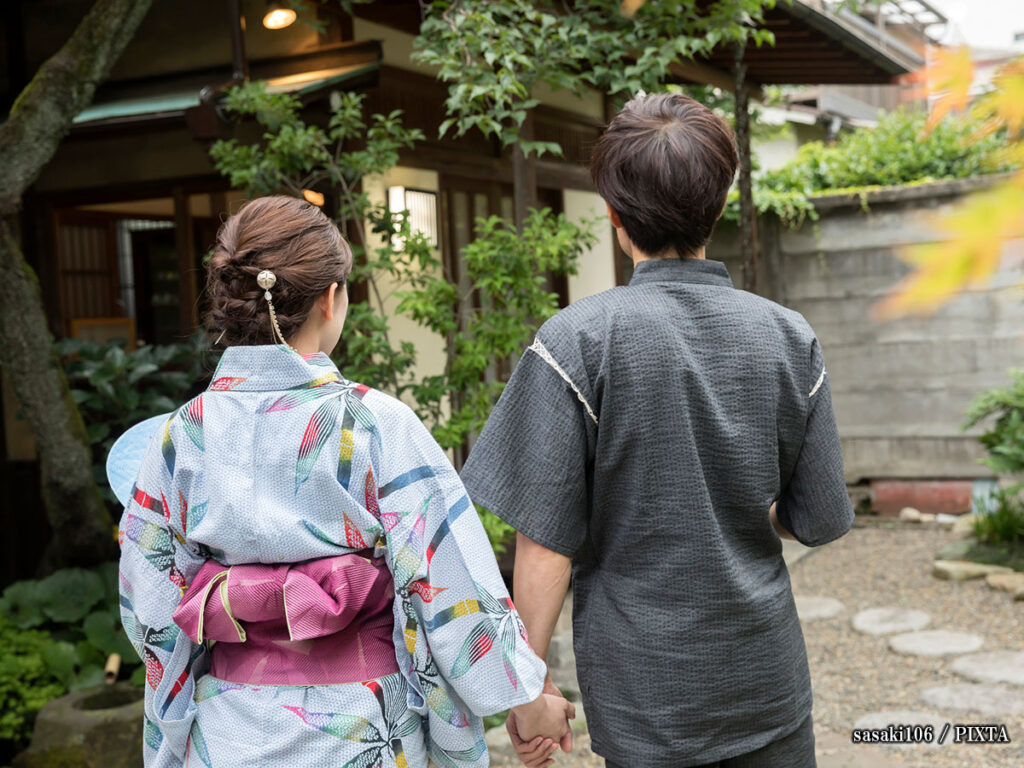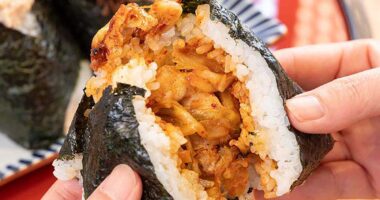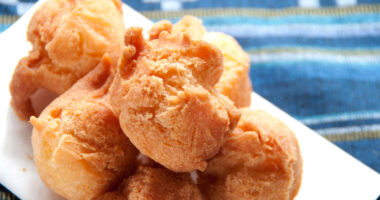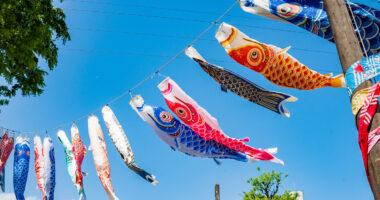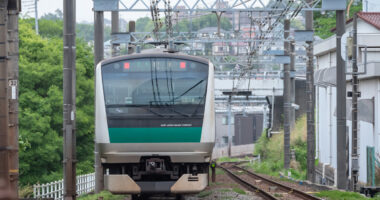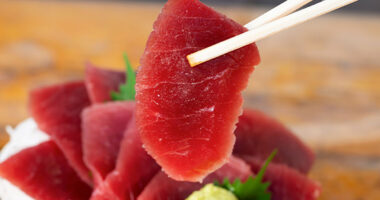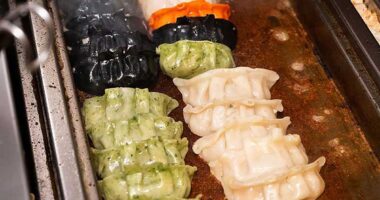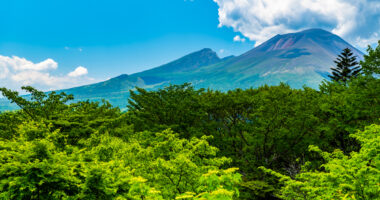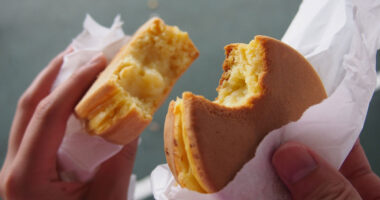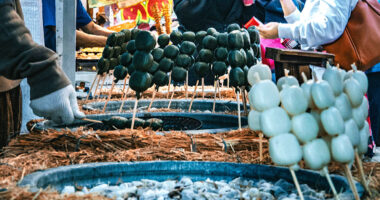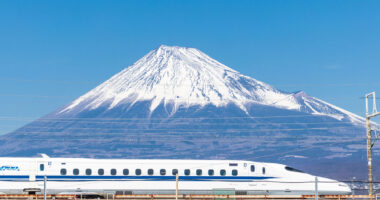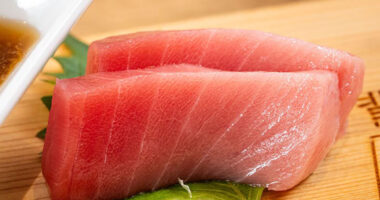In Japan’s sweltering summer months, traditional clothing often takes a lighter, more breathable form. Among the most common seasonal garments are the jinbei and yukata—both designed for comfort, but each rooted in different customs, occasions, and aesthetics. While they may seem similar at first glance, understanding the nuances in design, formality, and cultural context can help you choose the right one for your trip. Whether you’re dressing for a festival or winding down after a hot day, choosing the right garment can enhance both your comfort and cultural experience.
Design and material differences
The key distinctions between jinbei and yukata lie in their construction, fit, and typical fabrics.
Jinbei
The jinbei is a two-piece set made up of a loose-fitting, short-sleeved top and matching shorts.
- Design:
The top ties at the side with fabric strings and is cut for maximum breathability, making it ideal for hot, humid weather. The shorts typically reach the knees and have an elastic or drawstring waistband. - Material:
Most jinbei are made from lightweight cotton, hemp or linen, but sometimes polyester is also used. The fabric is often woven in textured styles like chijimi or waffle weave, which helps to keep it from sticking to the skin. - Appearance:
Overall, the jinbei gives off a relaxed, casual look. It is practical and unfussy, meant for comfort over formality.
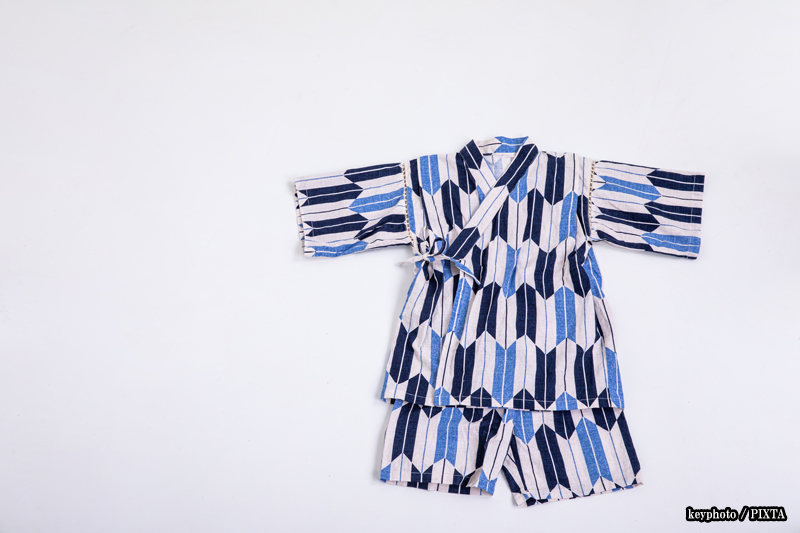
Photo for illustrative purposes
Yukata
The yukata is a single-piece cotton kimono worn with an obi (sash).
- Design:
Like a traditional kimono, it features a long, rectangular silhouette and wide sleeves. It wraps around the body and is secured with an obi, with the hem typically falling to the ankles. - Material:
While usually made from cotton, many modern yukata incorporate synthetic blends that resist wrinkles and improve breathability. Fabrics often feature colorful patterns and dyes than jinbei, reflecting the garment’s more decorative role. - Appearance:
Yukata have a more refined look than jinbei, resembling a simplified summer kimono.
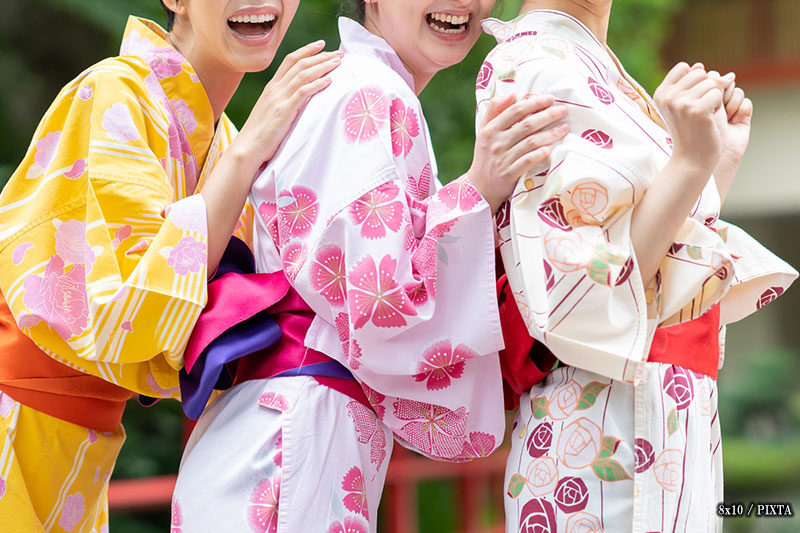
Photo for illustrative purposes
When and where to wear each
While both jinbei and yukata are associated with summer, the context in which they’re worn differs significantly.
Jinbei
Jinbei are casual garments traditionally worn by men and children, but now widely enjoyed by people of all genders for indoor relaxation and informal outings.
- At home:
Commonly worn during hot summer evenings, jinbei are a go-to choice for staying cool while lounging. - Casual outings:
Appropriate for short walks, errands, or quick trips to a nearby shop. - Local festivals:
A popular choice for natsu matsuri (summer festivals) and small community events, especially among those seeking comfort over formality. - After onsen (hot springs) or at ryokan (traditional inns):
Some ryokan offer jinbei for guests to wear after bathing in the onsen or while relaxing on-site, much like a yukata.
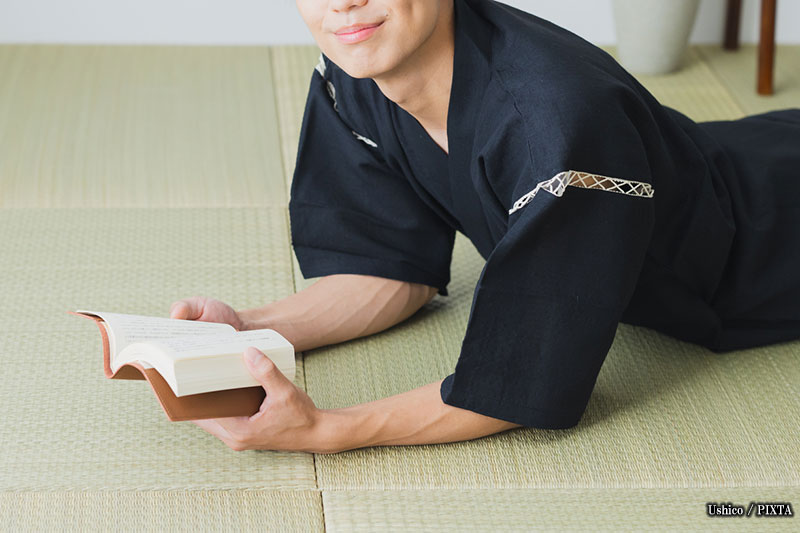
Photo for illustrative purposes
Yukata
Yukata strike a balance between casual and formal, offering a more polished look that still suits summer heat.
- Summer festivals and fireworks displays:
Worn by people of all genders and ages during matsuri and hanabi taikai (firework shows), often featuring bold seasonal patterns and accessories. - Ryokan and onsen towns:
Provided at many ryokan for use around the inn, in onsen baths, or for light walks through town. - Casual outings:
Though more formal than jinbei, yukata are still informal compared to full kimono and can be worn for sightseeing or evening strolls in traditional neighborhoods.
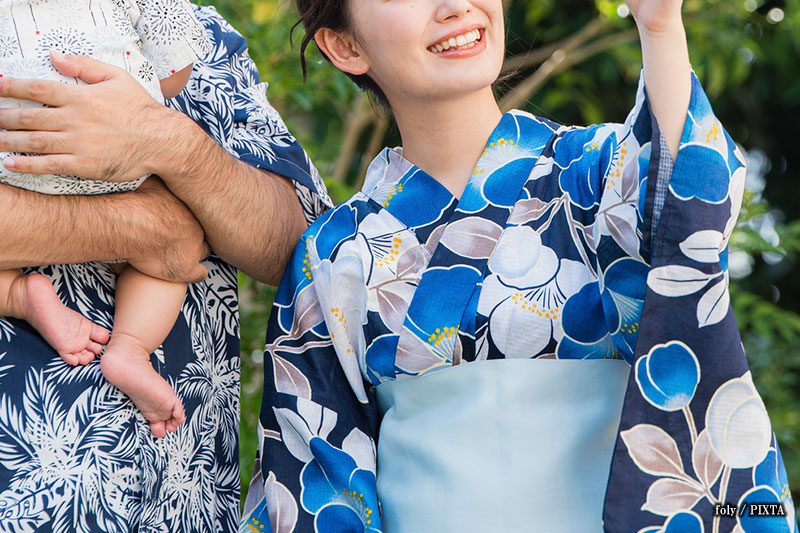
Photo for illustrative purposes
How to choose based on your travel plans
Choosing between a jinbei and a yukata largely depends on your itinerary and desired comfort level.
- For maximum comfort and everyday use:
If your priority is staying cool and comfortable, a jinbei is the better fit. It’s well-suited for lounging at your accommodation, running quick errands, or attending low-key local events. Its loose, breathable construction allows for better airflow and unparalleled comfort in the summer heat. - For festivals and cultural experiences:
Planning to attend a summer festival, fireworks show, or take photos in traditional attire? A yukata gives you a festive, traditional appearance that fits the atmosphere of these events. Keep in mind that putting on a yukata properly involves learning how to wrap it and tie the obi, which may require a bit of practice or assistance. - Combining both:
If your trip includes both relaxed days and festive events, having both can be a smart choice. A jinbei keeps you comfortable for low-key moments, while a yukata adds a traditional touch for special occasions. It’s a practical way to experience Japanese summer through local customs and everyday style.
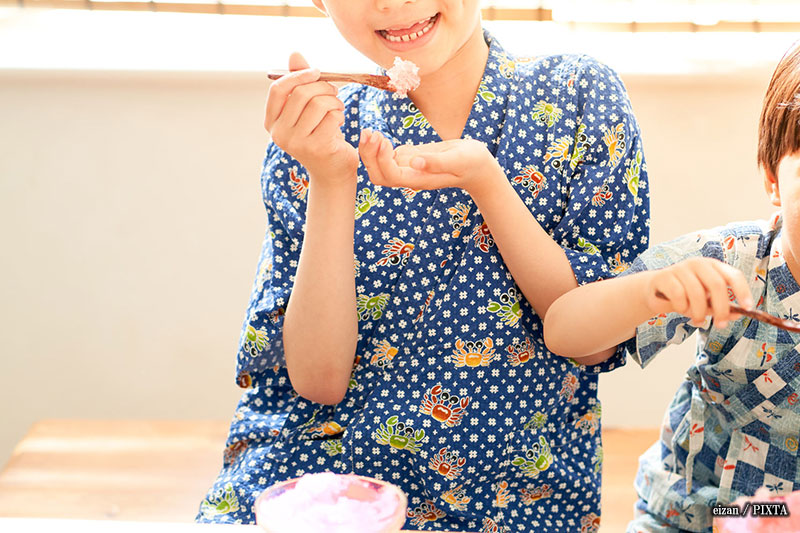
Photo for illustrative purposes
Where to buy or rent as a tourist
Finding a jinbei or yukata in Japan is relatively easy, especially during the summer.
- Department stores:
Larger retailers such as Isetan, Takashimaya, and Mitsukoshi typically carry a wide selection during the summer months. Expect higher quality materials, more variety in patterns, and staff who can assist with fit and styling. Prices are higher than at Uniqlo or discount chains. - Souvenir shops / Don Quijote:
Don Quijote and other large discount stores often carry a mix of jinbei and yukata, especially in tourist-heavy areas. Souvenir shops in places like Asakusa may also stock them, though prices and quality can vary, so it’s worth comparing. - Online retailers (within Japan):
If you’re staying long enough to receive packages, sites like Rakuten and Amazon Japan offer extensive options. - Yukata rental shops:
At shops in popular areas like Kyoto, Hakone, and Asakusa, you can rent yukata for a day. Rentals often include dressing assistance, hairstyling, and accessories—ideal for photoshoots or attending an event without the hassle of buying and packing your own.
Final thoughts: dress for the season, stay comfortable
Jinbei and yukata are shaped by the realities of Japan’s summer: hot, humid, and often busy with festivals and travel. Jinbei are easy to throw on, made for rest days and casual routines, while yukata bring a bit more structure and style when the setting calls for it. Both serve a purpose, and having the right one on hand means you’re dressed for the heat—and the experience.
